Do Woodpeckers Migrate?
If So, Which Ones?
Do woodpeckers migrate? This is a question that has long puzzled bird enthusiasts and scientists alike. While it is known that woodpeckers do travel long distances, the specifics of their migratory patterns have remained something of a mystery.
Some species of woodpecker do migrate, while some do not. Examples of woodpecker species that migrate are the Red-Bellied Woodpecker, Yellow-Bellied Sapsucker, and Hairy Woodpecker. Woodpeckers that don’t migrate include the Golden Fronted Woodpecker and the Downy Woodpecker.
In this article, I will enumerate some of the well-known species of woodpeckers that migrate and discuss why and where they go. I will also share a list of the non-migratory ones and the reasons why they don't migrate. So if you wish to know more about woodpeckers, read on!
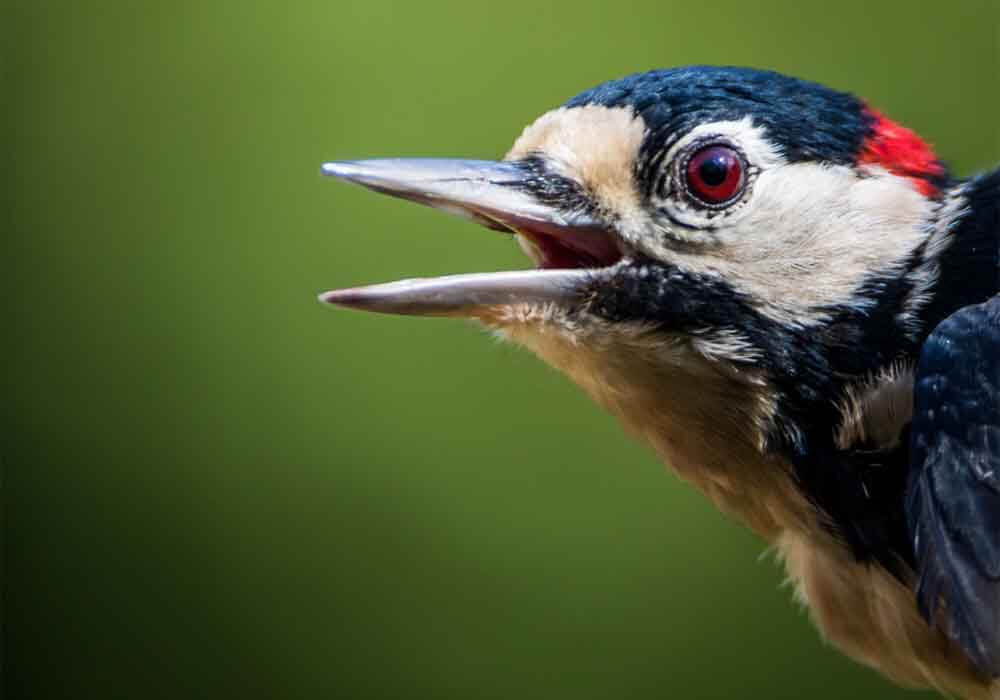
Which Woodpeckers Migrate?
Woodpecker species that migrate include the Red-Bellied Woodpecker, Yellow-Bellied Sapsucker, Hairy Woodpecker, Northern Flicker, Red-Naped Sapsucker, and Lewis's Woodpecker.
If you’d like to know more about the woodpeckers that migrate, I have provided some information below.
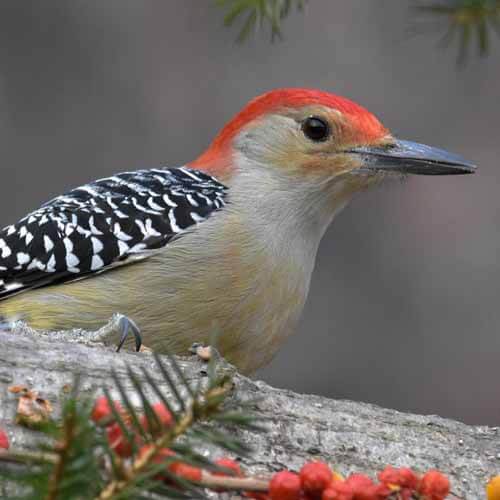
Red-Bellied Sapsucker
One of the most unique features of the Red-Bellied Sapsucker is its red belly, which is a striking contrast to the rest of its primarily black and white plumage. This bird also has longer tail feathers than other woodpeckers, which help it maneuver quickly and accurately through trees as it forages for sap and insects.
Additionally, the Red-Bellied Sapsucker has highly sensitive hearing that allows it to locate sap wells in trees and specialized pads on its toes that help it cling easily to tree bark.
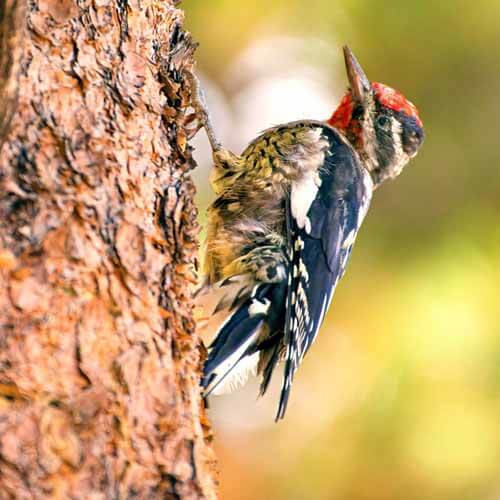
Yellow-Bellied Sapsucker
The Yellow-Bellied Sapsucker has a long, thin bill, which is used for drilling into trees to extract sap. This woodpecker also has lots of different colors and patterns on its body. It has black and white stripes on its back, yellow feathers on its belly, and a bright red patch on the back of its head.
Another unique feature of this bird is its ability to fly downwards while tapping on trees to find food, which allows it to access sap that other woodpeckers may not be able to reach.
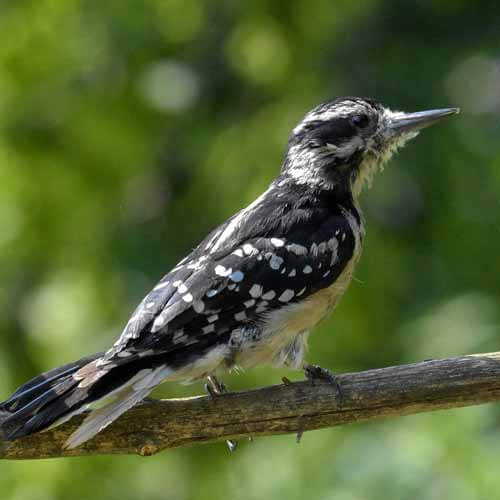
Hairy Woodpecker
This species has a distinct plumage consisting of black and white feathers with a long red crest on top of its head. This plumage helps it to stand out against trees and branches, allowing it to be easily spotted by predators.
Additionally, the Hairy Woodpecker has a long, slim bill specially adapted for pecking at the wood in search of insects and other small prey items. This bird also has strong legs and feet that allow it to climb vertically up trees and hang upside down as it searches for food.
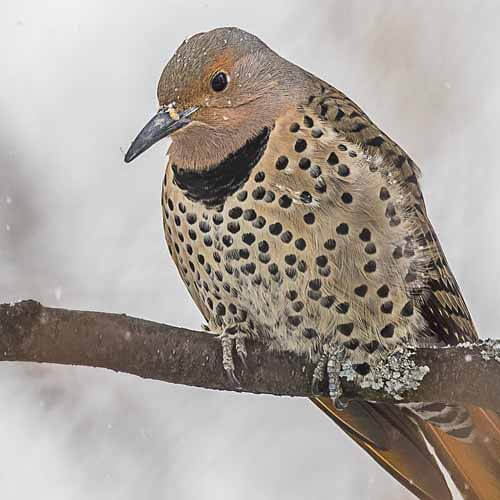
Northern Flicker
The Northern Flicker is a woodpecker characterized by its long, chisel-like beak and bright red underparts. In addition to these physical features, the Northern Flicker also has a distinctive call that makes it easy to identify.
Other unique characteristics of this bird include its preference for habitats with open areas and its diet of insects and seeds.
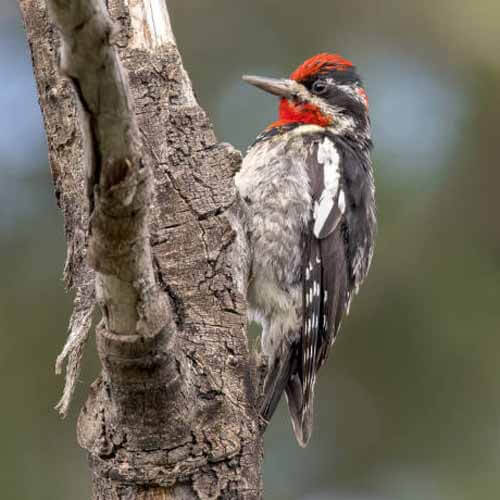
Red-Naped Sapsucker
One of the main unique features of the Red-Naped Sapsucker is its bright red head, which stands out against the black and white markings on its body. This woodpecker also has a long, pointed beak well-adapted for drilling into trees to find insects and sap. Unlike other woodpeckers, it also has a shorter tail relative to its body size.
Moreover, this species has specialized feet with two toes pointing forward and two pointing backward, which allow it to easily cling to tree trunks as it climbs around searching for food.
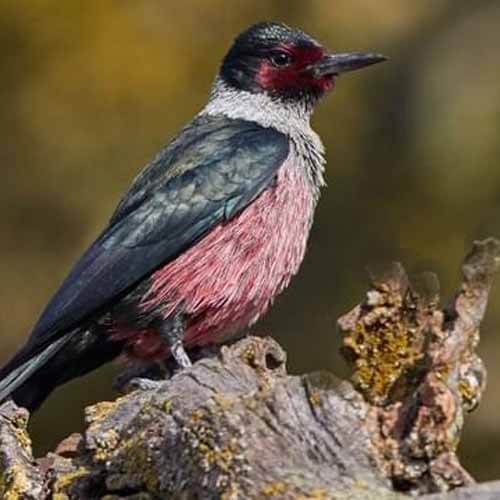
Lewis’s Woodpecker
The Lewis's Woodpecker is known for its long, curved bill and large crest, which are adaptations that allow it to quickly extract insects from tree bark. Additionally, this woodpecker has specialized feet with two forward-facing toes enabling it to cling tightly to vertical surfaces when pecking at bark.
Other features that set Lewis's Woodpecker apart from other woodpeckers include its strong, heavy beak and relatively short wings, giving it a unique flight pattern compared to other woodpeckers.
Why Do Woodpeckers Migrate?
Woodpeckers migrate for several reasons, including food availability and weather changes. They may also migrate to mate or a more suitable habitat.
Let's discuss each factor below in more detail:
Food Availability
Just like other animals, woodpeckers need to eat to survive. Some of them, such as the Red-Bellied Sapsucker, rely heavily on sap for food. If the trees that these woodpeckers live in do not produce enough sap, the birds may need to migrate to find a more reliable food source.
Insect-eating woodpeckers may also need to migrate to find areas with a higher concentration of insects.
Changes in Weather
Woodpeckers may also migrate in response to changes in weather. For example, if the temperature drops below freezing, those species that live in cold climates may need to migrate to warmer areas to survive.
Similarly, if a severe drought hits an area, the birds may need to migrate to find a more reliable water source.
Mating
Some woodpeckers migrate to mate. The Red-Bellied Woodpecker, for instance, is known to mate in the spring and summer months. This allows the female to lay her eggs in a tree cavity that is protected from the cold weather.
Furthermore, by migrating to mate, woodpeckers can ensure that they are mating with a bird of the same species.
Habitat
Some woodpeckers may also migrate to find a more suitable habitat. For example, if an area becomes too crowded or there is not enough food available, these birds may migrate to another location to find a better place to live.
Where Do Woodpeckers Migrate To?
Woodpeckers migrate to areas with more food resources and to locations with milder climates. Some woodpeckers may migrate to the southern United States during winter to find more food. These birds may also migrate to areas with less snow and cold weather, such as the coast of California.

So are woodpeckers endangered? You sure don't seem to see as many as you used to. Learn all the facts that answer this question in this enlightening article of ours.
Which Woodpeckers Do Not Migrate?
Some woodpeckers that do not migrate include the Golden Fronted Woodpecker, Ladder Backed Woodpecker, the Downy Woodpecker, and the Pileated Woodpecker.
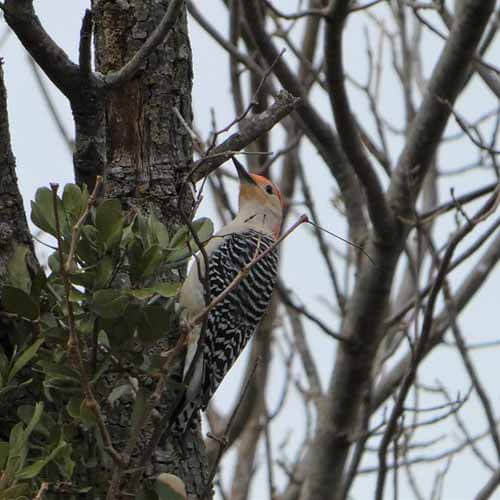
Golden Fronted Woodpecker
The Golden-fronted Woodpecker has a bright red cap on its head, and its back and wings are barred with white and black. It also has a small patch of yellow feathers on its belly. This woodpecker prefers to live in wooded areas, typically found in Central America.
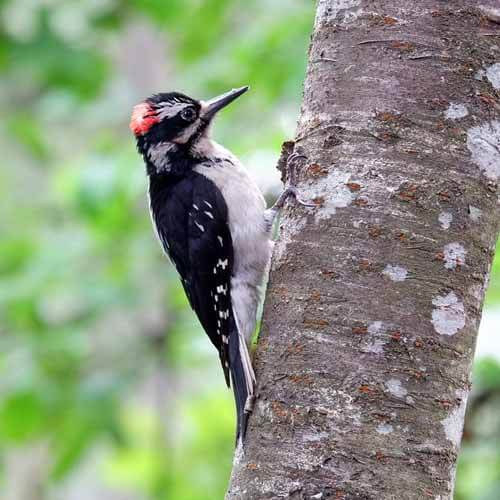
Ladder Backed Woodpecker
This species has black and white plumage, a black cap and nape, and a white face with a black stripe through the eye. Its back is black, with white bars resembling a ladder's rungs. The back of the heads of males also has a red patch.
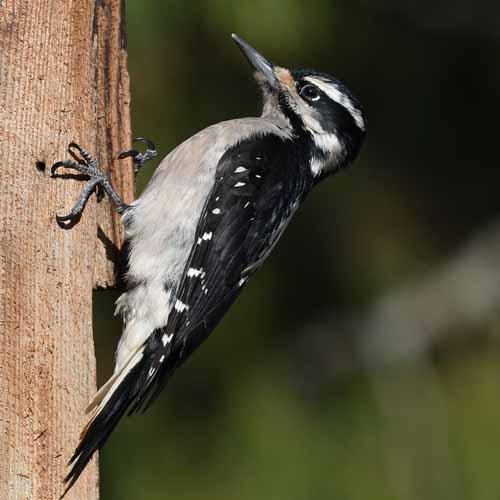
Downy Woodpecker
This bird is mostly black with white spots on its wings and a white belly and has a short bill and a long tail. On the back of their heads, male downy woodpeckers have a small patch of red feathers, but females do not.
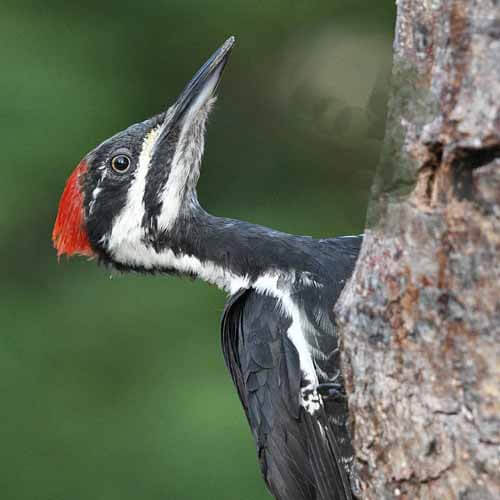
Pileated Woodpecker
One distinctive feature of this bird is its bright red crest. The rest of its plumage is black, with white stripes on its face and wings. Male pileated woodpeckers also have a red mustache, while females have a black mustache.
Reasons Why Some Woodpeckers Do Not Migrate
The non-migrating woodpeckers have a few adaptations that help them survive the winter. For example, they have a more diverse diet than migratory ones, so they can find food year-round.
In addition, non-migratory woodpeckers typically have thicker feathers and roost in smaller groups to conserve heat.
By not migrating, these woodpeckers save a lot of energy they would use for migration. In addition, the extra energy helps them survive the winter months.

Peck over all of our interesting articles about woodpeckers which you can find listed on our Woodpecker Information and Facts page.
Do Woodpeckers Migrate...Conclusion
So, do woodpeckers migrate? Unfortunately, the answer is a little complicated. While some species do migrate, others remain in the same area all year round. Also, factors like food availability and weather conditions can influence a woodpecker's decision to stay or go.
In general, most woodpeckers are content to stay put. So, if you're hoping to spot a woodpecker in your backyard this winter, you're more likely to see one if you live in a warmer climate.
Back To The TOP Of This Do Woodpeckers Migrate Page

About the Author...
Richard Worden, a dedicated bird lover for over 20 years, I love to share my in-depth knowledge and passion for birds. Read more About Me and my expertise in this field.
- We Know Birds HOME ›
- Woodpecker Facts and Information ›
- Do Woodpeckers Migrate?
